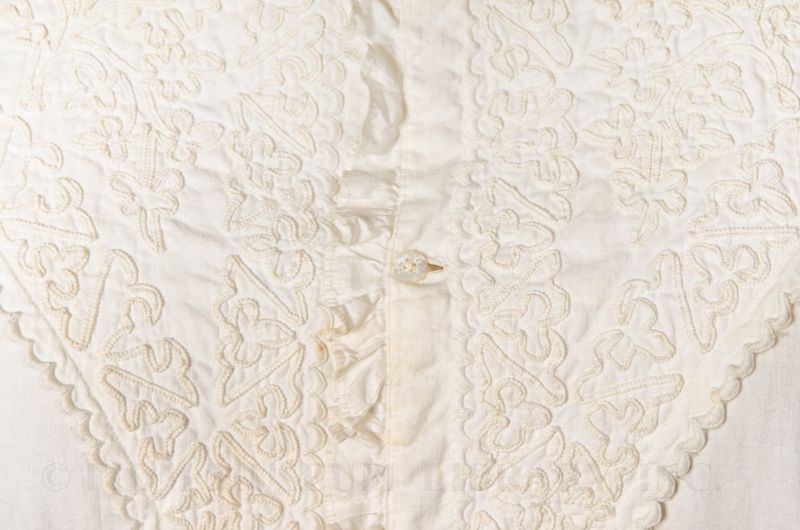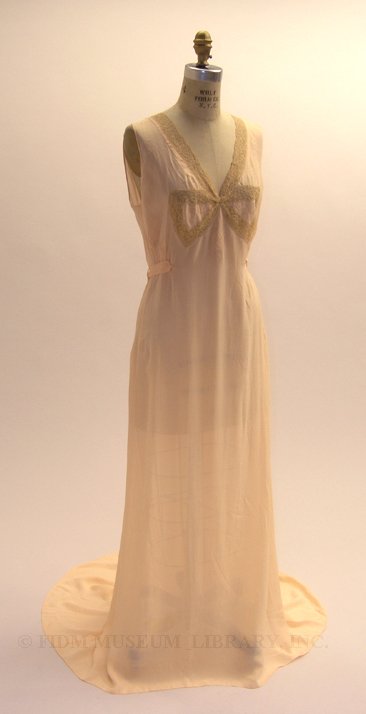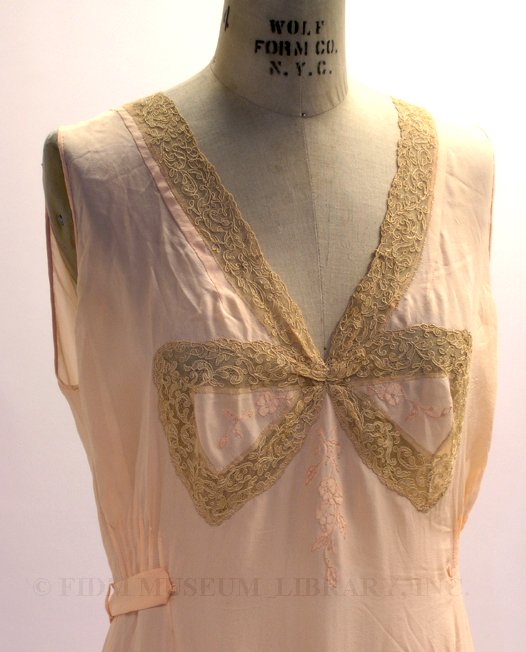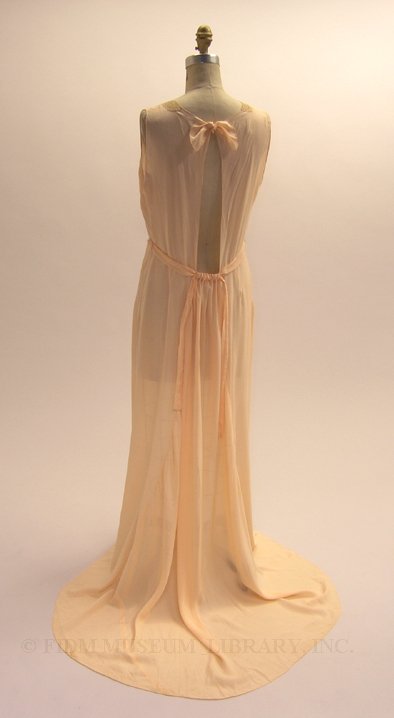In current usage, a nightgown is a women's or girls' garment worn specifically for sleeping. At different historical periods, the term nightgown referred to a loose gown worn by men, an evening dress worn by women and a day dress. Accordingly, it would have been unremarkable for a woman to appear in public dressed in a nightgown. It would also have been possible for women to "quite modestly go to church in their nightgowns."1
These differing meanings of the word nightgown point to the fact that throughout much of history, specialized garments for sleeping were unusual. Most people probably slept unclothed or wearing some element of their normal day-time dress. By the 16th century, T-shaped nightclothes were commonly worn by men and women. The white cotton nightgown pictured here dates from the 1860s.
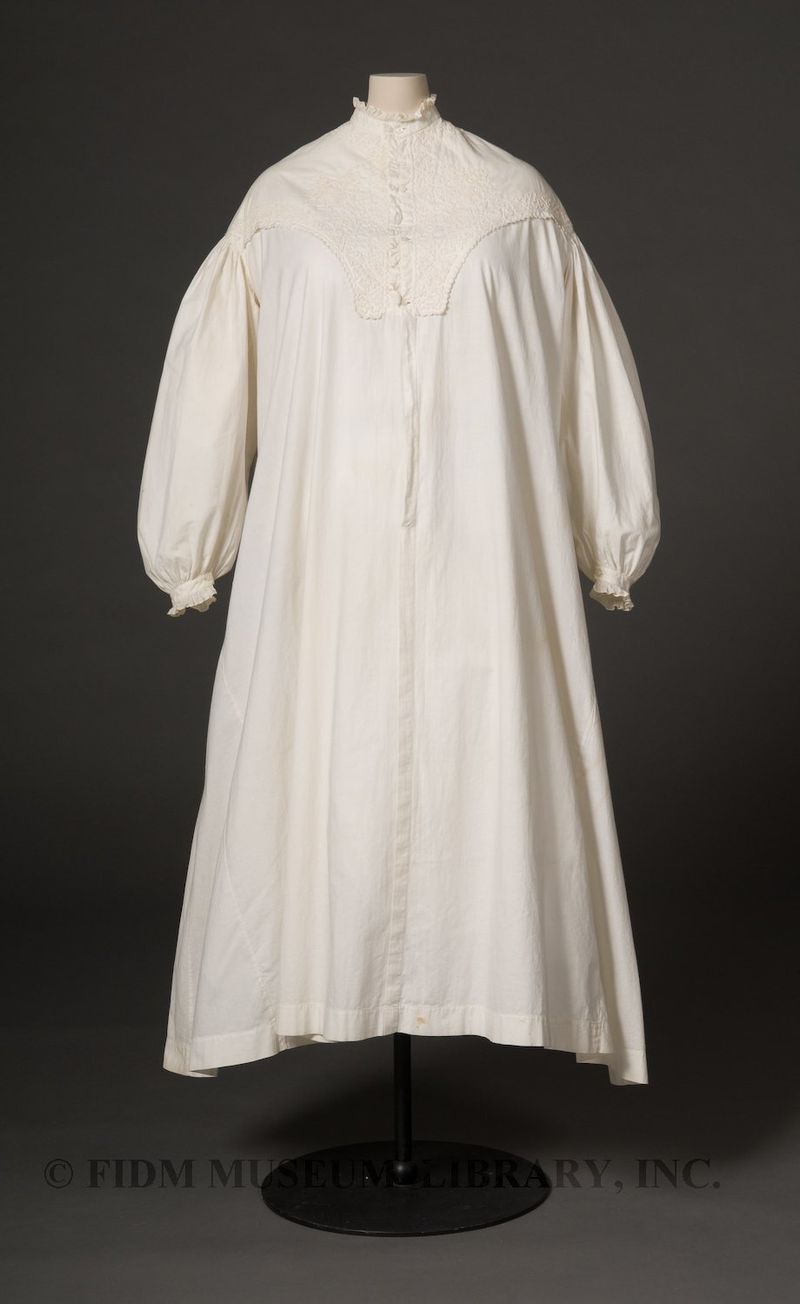 Nightgown
Nightgown
1860s
79.5.2
Museum Purchase
During the 1860s, Godey's Lady's Book featured many illustrations of nightgowns similar in shape, color and embellishment to this nightgown. The silhouette seen here, a very loose fit with full sleeves gathered into cuffs, was nearly ubiquitous. Only slight differences in trim distinguished one nightgown from another. White was clearly the favored color with white lace, ruffles, tucks or embroidery used to decorate the bodice and cuffs. White fabric, particularly when made of linen or cotton, also had the advantage of being washable, a necessity for a garment worn next to the skin.
Featured on the bodice of the FIDM Museum nightgown is white applied soutache trim similar to that seen on this 1870s polonaise. Ready-made nightgowns weren't widely available until the late 19th century, so this trim was probably worked by the wearer herself. Patterns available in Godey's Lady's Book provided directions on how to work various types of trim, though purchased trim was recommended because it eliminated the most difficult hand work. Nightgowns even had their own accessories; an 1868 pattern featured instructions for an envelope-like "night-dress case," made of cotton pique and trimmed with a narrow ruffle identical to what would be used on the nightgown itself.
Skipping ahead about 60 years, this 1930s nightgown has a dramatically different feel. Like many evening dresses of this decade, it falls to the floor and clings to the body. Made from a delicate peach silk, it demonstrates the gradual incorporation of pale pastels into the nighttime wardrobe. Inserted lace creates a bow at the bodice and pintucks provide slight shaping at the hips. Though ostensibly for sleeping, this nightgown might be more properly labeled a boudoir or bed gown. Intended for lounging at home, a bed or boudoir gown was worn when meeting with intimates or perhaps when illness necessitated a long stay in bed.
Night gown
c. 1935
Gift from the Estate of Martha Wells
2006.859.1
The back of this nightgown provides a dramatic illustration of the close relationship between fashionable day/evening dress and sleepwear. The back was a focal point of 1930s evening gowns, with a low-cut back providing a daring contrast to a relatively modest front. Though definitely not intended to be worn outside the home, this nightgown features an enticingly open back, as would the most glamourous of 1930s evening gowns.

